Ifrah Mansour finds light in the darkness of civil war
Ifrah Mansour bubbles over with energy when she talks. She is so cheerful and positive, it’s all too easy to forget the nature of her work as a mixed media artist and theatre maker.
Confronting topics as heavy and politically-charged as being a refugee of the Somali civil war, immigration, and Black Muslim female identity, Mansour’s body of work is anything but light. Perhaps this creative outlet is what she needs in order to release the negative and free her exuberant, light-hearted personality.
She didn’t set out to become an artist, though. As is the case with so many powerful artists, it all sort of happened by accident.
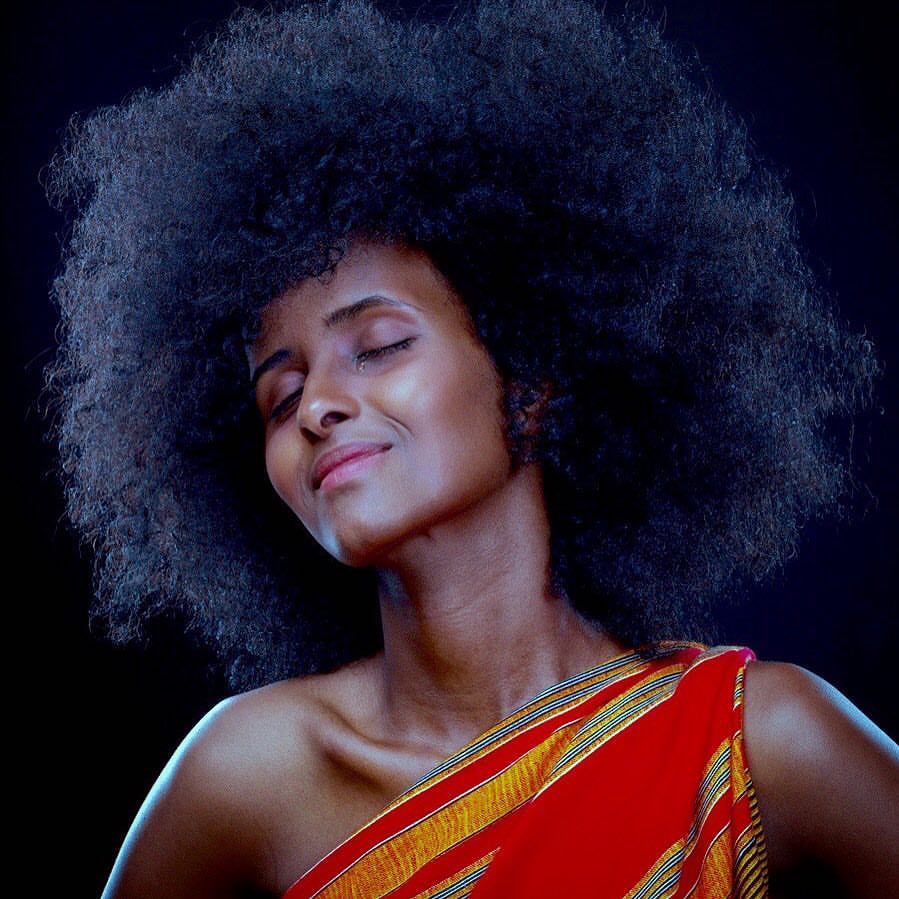
When Mansour was in college and needed some money, she got a job off campus, which happened to be at Mixed Blood Theatre, located in a predominantly East African neighborhood in Minneapolis. She remembers passing by the theatre every day on her way to campus for years, wondering what it was and hearing stories from people in the neighborhood about what was going on inside that building.
“White people go in and draw blood,” some proclaimed. “No, it’s an old people rave,” others corrected. The theatre had been around for decades but still served a predominantly white audience in a low-income neighborhood that was a hub for new immigrants. It coexisted with the East African and Hmong immigrant population in the area, but was still very much separate.
While Mansour worked there, the theatre’s leadership decided they wanted to market and cater their work to the community in which the theatre existed. The way to do that, they figured, was to get people from that community to do some creative work.
“The theatre finally said, ‘Okay, maybe we should make a play about the community,’ but they had a hard time finding Somali people and someone said, ‘You know, Ifrah can go up onstage.’ And that’s how I got my first acting role: because they couldn’t find anyone,” Mansour laughs.
Prior to that, she was on track to become an elementary school teacher. Her life was already set.
“I was just going to be a good old boring kindergarten teacher for the rest of my life and it was looking a little gloomy,” she recalls. “I started this job and I remember I was really bad at marketing the theatre to community, which was my job, so I was bad at the job. But I got to see their productions for free and sometimes I had to see them two or three times to find different aspects to market to the community. I just remember falling in love with the African American theatre artists. I didn’t say right away, ‘I’m going to do that,’ I just remember feeling awoken inside and wondering why does this feel so pulling.”
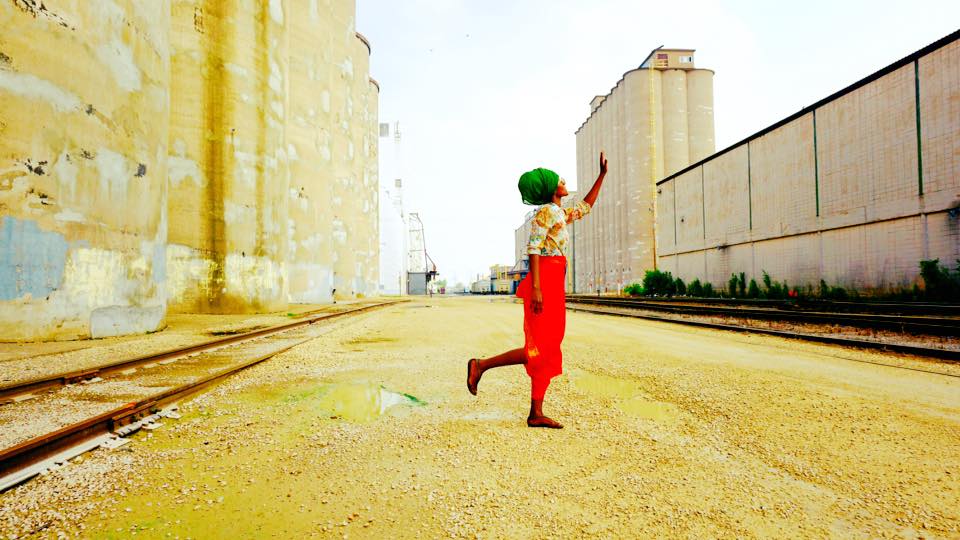
After her onstage debut at Mixed Blood, she met some people at Bedlam Theatre, where she was able to stage her first play – a “behind-the-scenes” look at a live fashion show that showed how the show was falling apart backstage, in direct contrast to the “unreal” perfection of the runway.
Once the theatre called to her, she knew she had to follow that path.
“I just dropped everything. I felt like finally something awoke within me and I had a brave moment, so I left my master’s degree unfinished,” she says. “I can’t believe where I’m at and where I started and how unlikely it is to be here now. That was eight years ago but I still consider myself a beginner. I don’t know when I’ll stop being a beginner. It feels like I am the least formally educated in any room I’m in, but with that I’m sort of able to push the boundaries and accidentally think outside the box because I was never in the box to begin with.”
Mansour refers to herself as a mixed media artist rather than strictly a theatre maker. She loves to blend genres, to make films and sculptures and soundscapes to be incorporated into her stage works in order to create multi-sensory experiences.
Her work also tells stories that are personal to her and reflective of her own experiences. Those experiences are often difficult for people to confront, so she tries to present them in a way that is relatable and non-confrontational.
Somalia’s Balloon is one such work. A short, kid-friendly piece that can be performed in any variety of settings – someone’s bedroom or bathroom, a park, a state fair – Mansour says Somalia’s Balloon is very versatile, short and sweet, and hits people in the right direction but in a very peaceful way.
“Somalia’s Balloon talks about Somalia’s colonial experience from a place that kids can digest and from a place that Americans can understand,” she explains. “I always think about how people [treat the subject of] colonization as this unacceptable [conversation] because ‘It didn’t happen to us, it happened to other people,’ and because [the perception is that] it’s so far in the history books. It’s very hard to talk about colonization without having people shut down and say, ‘Oh, here’s another history lesson.’ I wanted to make this piece of history be alive for almost anyone to connect to it.”
In Somalia’s Balloon, a little girl walks the audience through her beautiful home while a stranger comes in repeatedly and proclaims, “From now on, your vacuum is mine. Your kitchen is mine.” Telling this piece of history from a child’s perspective makes the story acceptable to everyone, Mansour says.
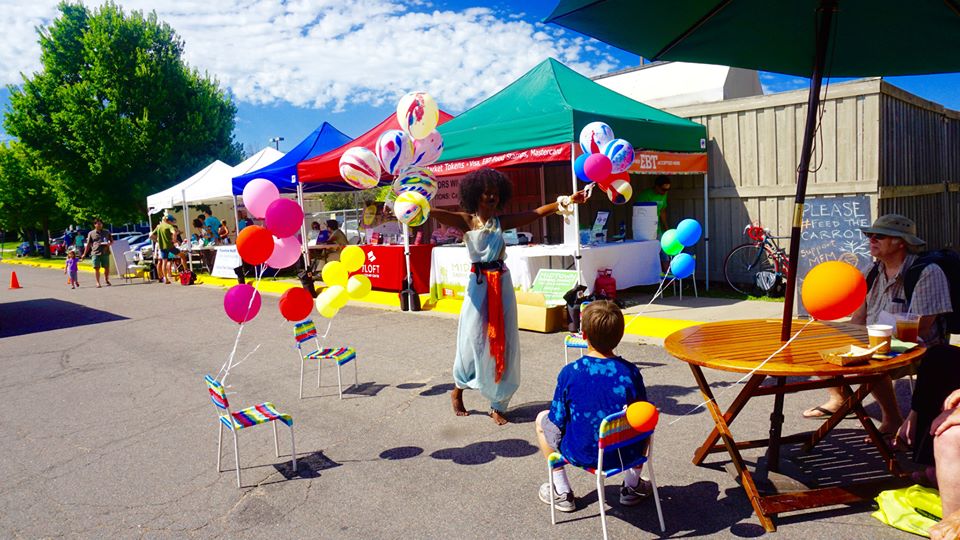
She performed this piece in 2015 at the Minnesota State Fair. It actually grew out of another piece she had planned called How to Have Fun in a Civil War. She initially planned on presenting this other piece at the State Fair, but ultimately decided she wanted to water down the story a bit for such a large – and predominantly white – audience.
“Here they take my weird ass play in the middle of the biggest white people gathering so I was freaking out,” she says. “[I decided to water down the story of How to Have Fun in a Civil War] because most of the audience wouldn’t have heard the word ‘Somali’ let alone heard about their civil war let alone the struggles of the people who lived through it.”
So she left Civil War as it was, a work in progress, and created Somalia’s Balloon, which intentionally throws people into the middle of the civil war.
“It’s okay to throw a person into the middle of a story,” Mansour states. “They’ll be interested enough and go home and Google it and learn more on their own. This play was to be a random, out-of-nowhere ice breaker.”
How to Have Fun in a Civil War would still premiere later. This piece, like her theatre debut, happened by pure accident.
“I was waiting for a friend at a coffee shop and she was late two hours,” she recalls. “I took the bus to her choice of coffee shop. It was winter and blizzarding outside so I decided I was just going to wait for her and work on my writing. That was in my third year of pretending to be an artist and I was always trying to find ways to hone my writing skills. I had looked up this prompt online to pick a specific place in your life, write it from a detailed standpoint and write as may details as you can. I followed that prompt and wrote three pages [about living in Somalia during the 1991 civil war], and at this point my friend showed up.
‘Two months later I was asked to do an outdoors show in North Dakota. It was my first out of town show and I was super excited, but the only caveat was that they wanted me to share something about myself and being Somali. At this point I had been creating weird shows about modeling and eating vegetables on a runway. I just had this one piece of writing of what I had experienced.”
But she also had her sculpture “Grandma,” her first installation which she weaved as she pretended to be her ancestors who built their homes out of spit. The sculpture commemorates her grandmother, who was a farmer, and was part of an exhibit that was about to close. The sculpture was just going into storage after that.
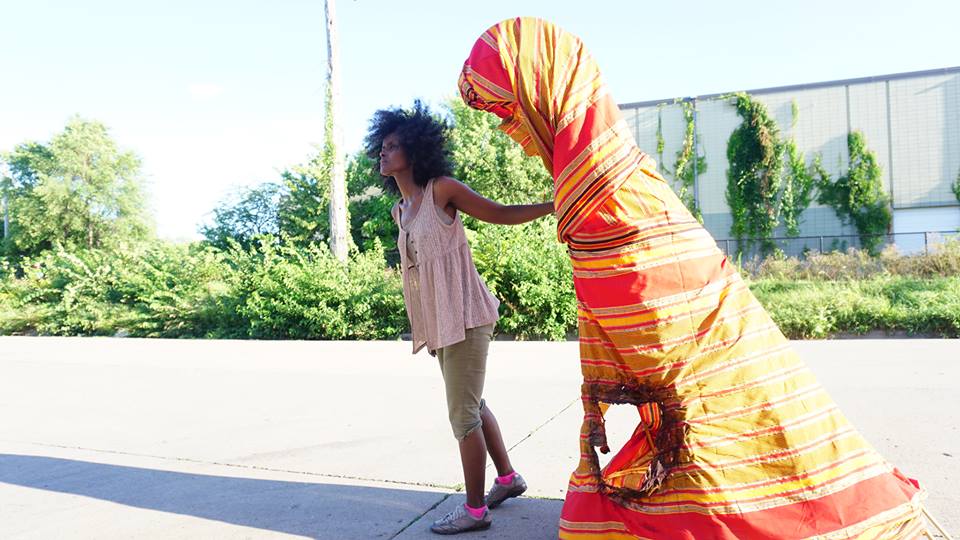
“So in my artists’ collection I had this free writing paper and this sculpture, and I brought both of these items to the Artistic Director of Bedlam Theatre and said, ‘This is what I’ve got. Can you create anything out it?’ And that was the beginning of How to Have Fun in a Civil War.”
The initial version of Civil War was short at only 10 minutes long. It showed the beginning of the journey of a little girl waking to the civil war and her family deciding to flee the country.
“This little girl thinks she’s going to see the world, then slowly becomes aware of how her surrounding is changing and of how much danger she and her family are in,” Mansour explains. “It’s a beautiful way to tell a trauma from a kid’s perspective. It was also therapeutic for me, but it felt like a lot of times I was re-traumatizing myself. But I also like going back and finding where that wound is because you are learning the depth of your history and your trauma, sort of poking and probing your own ruins so you can better heal in a way that is least intrusive and least painful.”
A year later in 2016, Mansour received an Artist Initiative Grant from the Minnesota State Arts Board and was able to expand the story, finishing the play’s journey and adding other narratives from 16 interviews she conducted and recorded. The audio from these interviews is interwoven into the play, adding another dimension to it.
“I’m aiming for the idea that the entire family is telling the same story [from their own perspectives], with everyone chiming in and adding onto it,” she explains. “They’re letting the kid tell the story but adding in their own way because this is a shared trauma and history among the Somali. I wanted every Somali person who comes to the play to feel this inclusion. But there is also the trauma that was caused by other Somalis as well, so there’s this peacekeeping element I have to keep in mind. If we look at the civil war and don’t study it too deeply all we see is Somalis killing other Somalis, and that’s not what I wanted to focus on. I wanted to focus on people coming together over their political views.”
Mansour has most recently been awarded a 2017 St. Paul Knight Arts Challenge grant and will be showing How to Have Fun in a Civil War in St. Paul in the near future. Her “ultimate dream” for this, she says, would be to connect with an organizational partner in St. Paul that serves students so she can do more student matinees, particularly for Somali students.
“I live in the state with largest population of Somali immigrants and I want to make sure my work is acceptable to them,” she says. “Thus far they are not consuming theater. They are going to galleries and museums, but theatre is a little out there so it has been slow growth as far as developing a Somali audience on my end. It feels like it might be a good strategy to catch them really young.”
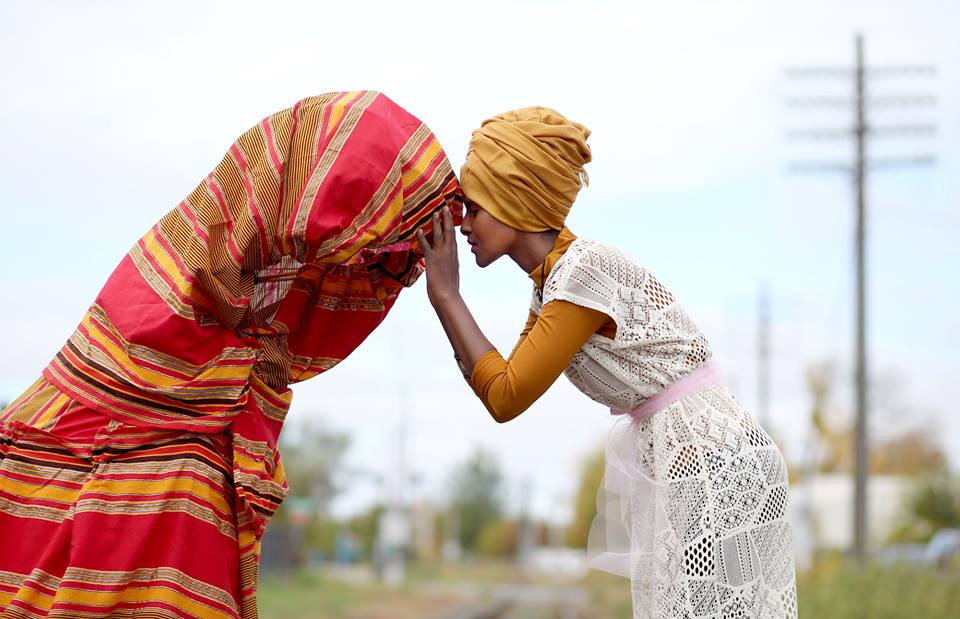
When she first premiered the full version of Civil War, she used social media to reach out directly to the Somali community. Because of that, a good number of Somali people came to watch the play and participate in the cultural discussion afterwards.
“The feature length is still an icebreaker where I want to bring people who share the story as well as folks who don’t share the story together to have this moment in this safe place,” she says. “The play was created to talk about this universal need to heal from all the pains that we carry with his, whether from historical trauma or living here in America or what it means to be an ally. A lot of Somali parents brought their kids and during the cultural discussion they said they did not know where to start as far as telling their stories to their own kids because their children were born and raised in America. It was important to the parents because they felt like they finally had somewhere to start.”
Mansour says the people she interviewed, whose voices are heard during the play, have taken that first step for everyone else.
“One person shares their story first and that person inspires everyone else to be brave and share their stories. It takes that pressure off being first. Historically we are taught that it is safe to hide pain or trauma because that is the best way: out of sight, out of mind. It must not be affecting you because it’s not visible.
‘I do realize that I am going back and poking through my own wounds and those of my community, but what I’m learning is, because I went through this as a child, my parents were so good at shielding and protecting us and I’m discovering as an adult the strength of the people around us. That is the lesson here: rediscovering the strength of people, and that ought to be the peacemaking element.

(1) How do you like to collaborate?
I like to collaborate openly and that includes sharing a lot of Google docs and meeting a lot and using a lot words.
(2) How do you a start a project?
I start a project with words, sometimes with a feeling, and a lot of times with a design in mind. For example, I always somewhat knew how “Grandma” (the puppet in the play) was going to look: I wanted to show her prostrating before the earth. So sometimes it’s the posture I have in mind.
(3) How do you talk about your value?
Being asked to talk about my value is the most painful experience! My brain exists in images and feelings and sounds, so I probably will talk in circles when people ask me that question before I get to the point. I hold myself to this standard of adding more peace and beauty into the world and I love capturing people in their most powerful stages. It’s very hard to talk about that in grant applications, but thanks to social media I have lots of pictures of people smiling at my artwork!
(4) How do you define success?
Since I do a weird mixture of stuff, so if I have all my body parts – “Did you lose any toes? Do your partners still like you? Did they block you on social media? Okay, not yet.” – then it’s a success.
I want to make sure diverse bodies are consuming my work. I am a person of color so my work should be consumed first and foremost by people of color. I’m trying to uplift myself and trying to uplift them as well. The State Fair was different: there I am a person of color and I have these stories so I’m trying to educate individuals who don’t share those stories with me. I have had shows where only two people were there but how those people were affected by or connected to the work was very important, versus filling up the theater. I am doing this so that more people can feel connected to people who look like me and feel at ease and at peace with us.
(5) How do you fund your work?
I self funded the first one. The puppets I designed were with my own hard-earned money. I got this chance to exhibit so it was all out of pocket. Living as an artist you already know you don’t make enough and yet here you are a building a random house you can’t even sit in and using fabrics that were too expensive even for your grandma to use, so there’s a lot of contradicting expenses that I have.
I do feel like I have organized my life so that I can live as minimally as possible. I wish it was because I cared about the earth that I don’t have a car but no, it’s because I know I’m going to get paid the least amount of money and want to use it to make art.
I used three months of rent money to buy a fancy camera and because of that I was able to take pictures of people smiling – “Look at these lovely people!” – then I could take that to grant people to give us money and use that to make money. Artists are creative problem solvers!
I’m afraid of losing my creativity now that I have grants. I hope I never lose my ability to stretch a dollar. There’s something very organic that happens when something doesn’t exude money. I work in a neighborhood where people can’t find jobs; they don’t have a lot of money; they live in low income housing with no access to a library or a grocery store. It’s been very important to me to not plot something that exudes money or privilege.
It feels good to have grants, but at the same time you have to be mindful of the people you want to impact the most. With the last project I made sure to use community members to build a house because this project has to address social issue of able-bodied people or elders not being able to find jobs. There are a lot of social elements that go into this money thing. I feel like I’m losing my creative self every time I apply for a grant. Thinking about it in this money-driven way I feel like it’s very soul-wrenching and that’s really a horrible place to put an artist. I also I hope I don’t lose my creativity. When I was poor and had nothing I was able to create these rich works because money wasn’t a question anyway. That would be the ultimate death of my soul, saying I can’t make something because of money.

[…] SPRINGBOARD EXCHANGE […]